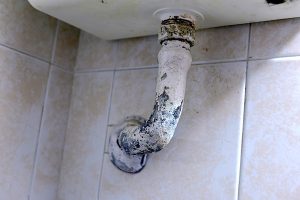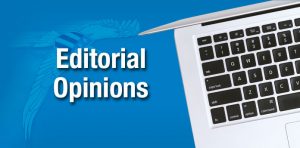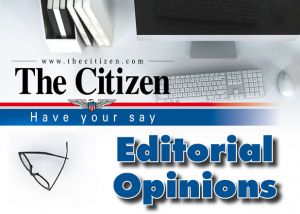By Dr. Andrew Waits, Au.D.
Special to The Citizen
The link between nonsteroidal anti-inflammatory drugs (NSAIDs), such as ibuprofen, and hearing loss tends to be greater in women, especially for those who take ibuprofen six or more times a week, according to a new study by researchers at Brigham and Women’s Hospital in Boston.
“Many of the harmful effects of NSAIDs are related to their primary mechanism of action through the inhibition of prostaglandins,” said Sharon G. Curhan, MD, the lead author of the study and a physician and clinical researcher at Harvard Medical School in Boston and in the department of medicine at Brigham and Women’s. “A proposed mechanism is that NSAIDs can reduce blood flow to the cochlea, which could result in cellular damage and cell death and thus impair cochlear function.”
Some 62,261 women aged 31 to 48 who used aspirin, ibuprofen, and acetaminophen were followed for 14 years, and 10,012 reported hearing loss. Compared with women who used ibuprofen less than once a week, those who used it two to three days a week had a 13 percent increased risk for hearing loss. Women who used the medication four to five days per week had a 21 percent increased risk. Those who took ibuprofen six or more days a week had a 24 percent increased risk.
The link between regular analgesic use and hearing loss was most common among women younger than 50, and although advancing age is a strong risk factor for hearing loss, “this may be because the relative contribution of regular analgesic use to hearing loss may be greater in younger individuals before the cumulative effects of age and other factors have accrued,” Dr. Curhan said.
It is not yet time to put warnings on these medications despite the observed link, said Glenn Isaacson, MD, a professor of otolaryngology-head and neck surgery and the director of pediatric otolaryngology at the Temple University School of Medicine in Philadelphia. This connection needs to be investigated,” he said. “It is currently very weak. There was no testing for hearing loss in the study, and the population was not representative of those in the United States.” Dr. Isaacson did call the study “interesting” and “unique,” and said it “merits thought” and should be studied further.
The noise associated with shooting firearms and riding motorcycles is responsible for many standard threshold shifts (STSs) and permanent hearing loss in the general population and those working in the firearm and motorcycle industries. Hearing healthcare professionals evaluating patients for the cause of their hearing loss may see these as special circumstances that are weighed against the patient’s job, hearing changes over time, audiometric configuration, medical complications, environmental and genetic findings, age, and other noise exposures and traumas.
Patients may tell me they only shoot once in a while, wearing ear plugs or muffs, or they wear a full-face helmet and ear plugs while riding. I expect, in these cases, to see a noise-induced, high-frequency hearing loss with a notch in the audiometric history. Despite the use of hearing protection and old wives’ tales, hearing loss may still occur in many cases, especially for those with occupations requiring these exposures and those genetically susceptible.
One shot of gunpowder is powerful; accident cases I have evaluated show an airbag deploying at 165 dB SPL peak resulting in sudden changes in hearing and the onset of tinnitus. The rear of a .22 caliber bullet exits the muzzle at the supersonic speed of 800 meters per second, creating more than 165 dB SPL peak. Wearing earmuffs and ear plugs under ideal conditions provides maximum protections of 30 to 35dB, reducing the potential exposure to only 130 dB to 135 dB at best.
Information from the National Institute of Occupational Safety and Health confirms the potential for hearing loss to occur with one shot above 140 dB SPL peak, but who shoots only one round? Only three shots a day are permissible at a peak level of 135 dB SPL, and up to 100 rounds are allowed at 120 dB SPL before hearing loss may be acquired with repeat exposures. This would suggest that skeet and trap shooters and bird hunters are at greatest risk. The synergy and potentiation between lead dust, solvents, and noise cannot be ignored because outdoor air quality measured within shooters’ personal breathing zone exceeds all permissible exposure levels. Even picnic table surfaces, hands, and especially firearms at target ranges are at dangerous levels. In this case, there is a synergy between lead dust (and cleaning solvents for the firearms) that is breathed in and the development of hearing loss. The combination may increase the degree of hearing loss from noise.
A similar problem exists for the six million professional motorcyclists and recreational riders, even if they wear a full helmet. Street motorcycle riders are typically at less risk than professional racers and skeet shooters, but the noise inside a full helmet with a face shield traveling at 62 miles an hour is more than 100 dBA.
Most of us may think the noise comes from the engine and tires, but the primary noise source is aeronoise, which is created by air between the base of the helmet, the chin bar, and the rider’s neck.
A complete history of all noise exposure is needed when evaluating hearing loss causation, and it should include shooting guns and riding motorcycles, regardless of the significance to the patient or claims of hearing protection. An evaluation of the risk for noise-induced hearing loss and tinnitus because of these exposures must be considered an important factor in occupational noise determinations.












Leave a Comment
You must be logged in to post a comment.